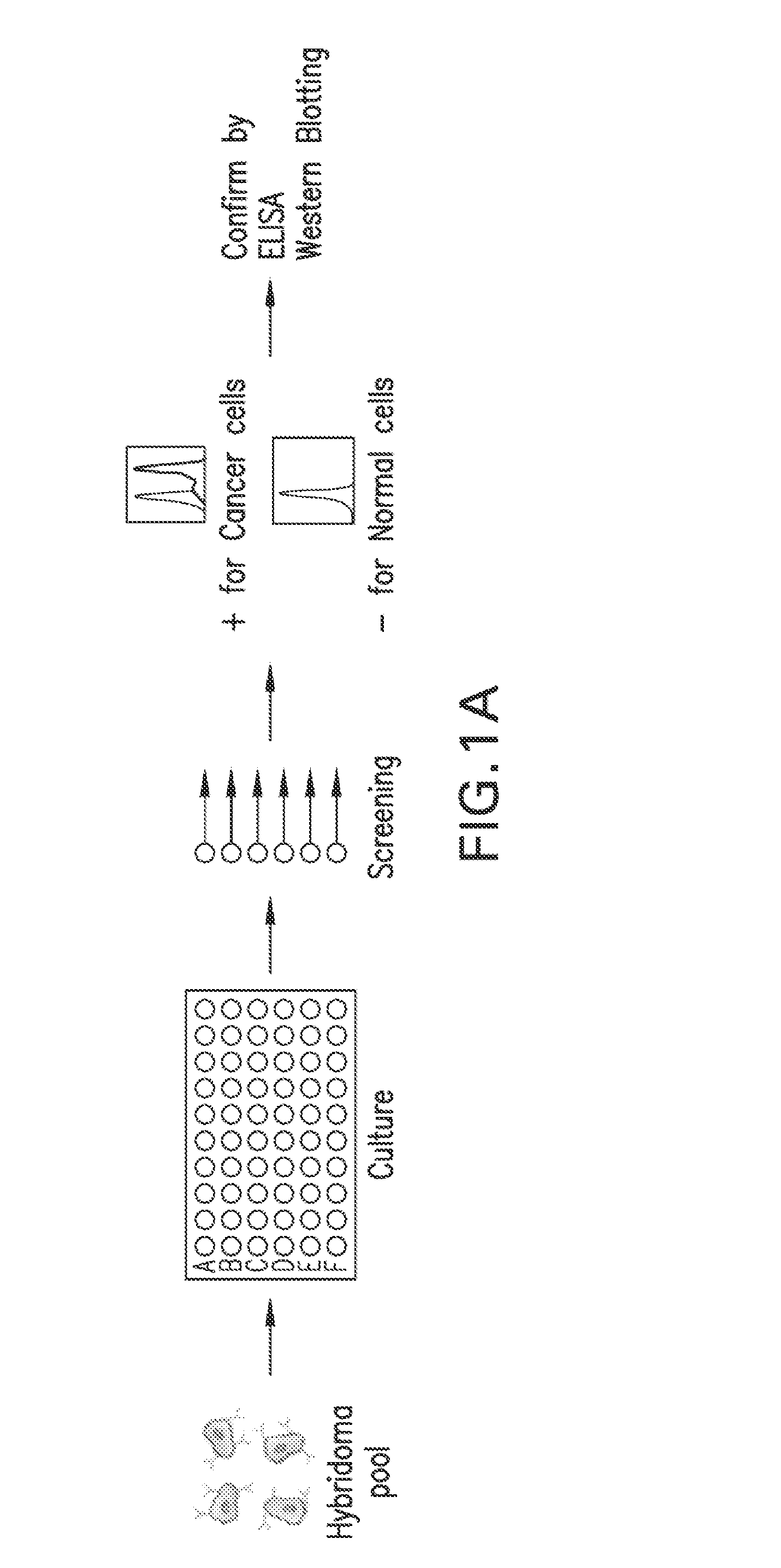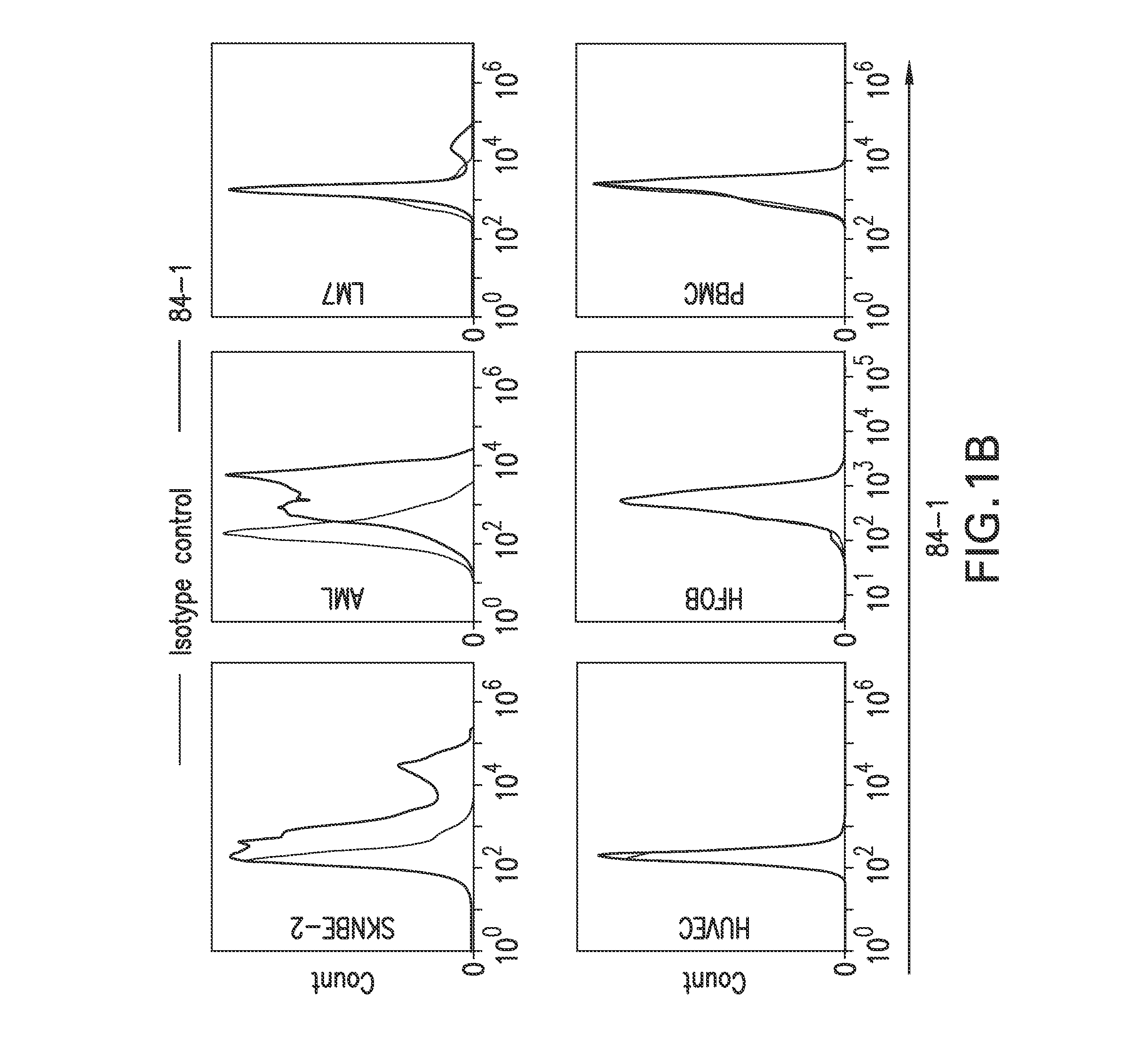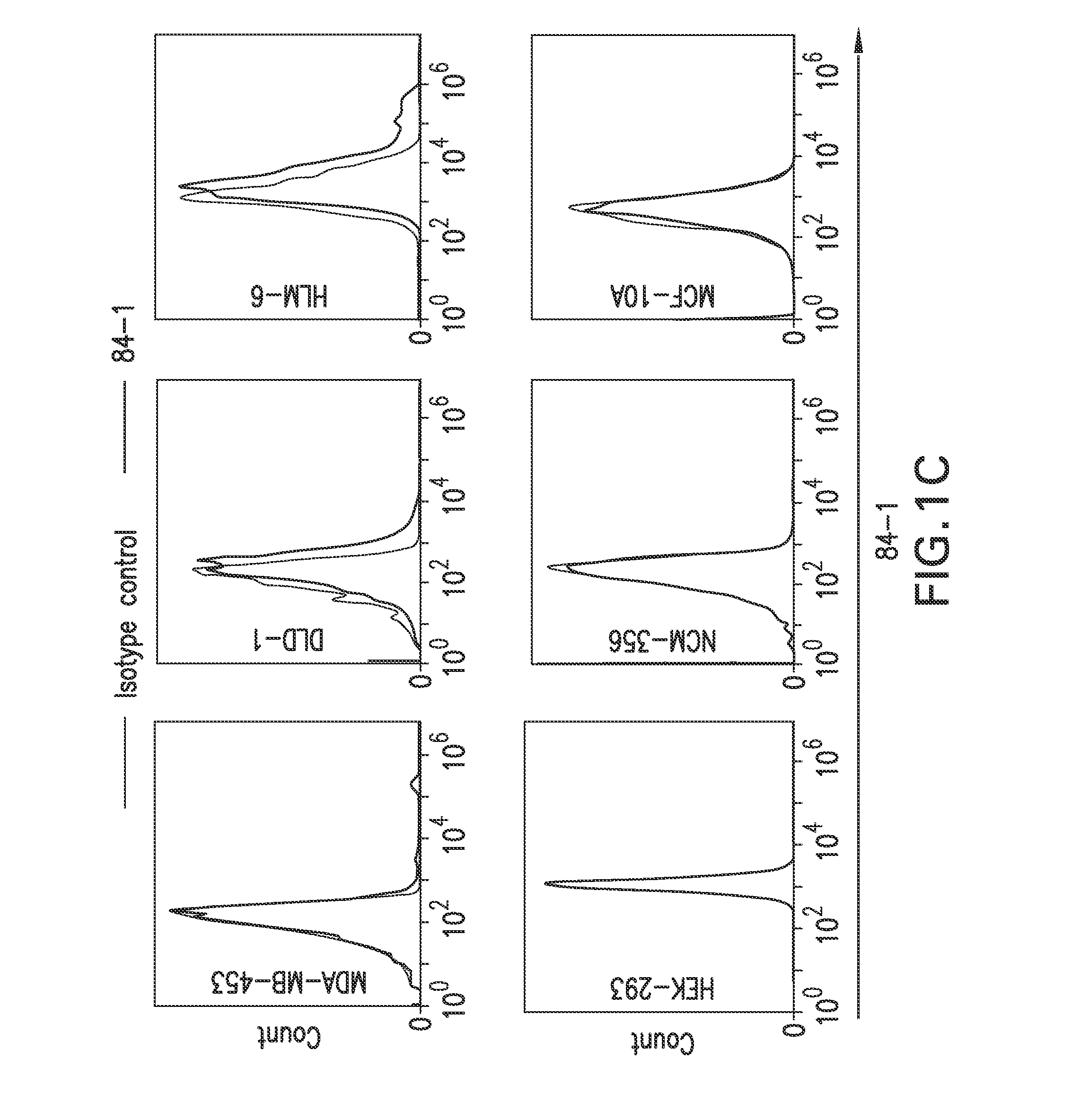Specific detection tool for mesenchymal and epithelial-mesenchymal transformed circulating tumor cells
a technology of epithelial and epithelial mesenchymal transformation and detection tool, which is applied in the field of cancer biology, can solve the problems of cancer-related deaths and desperate need for novel tools
- Summary
- Abstract
- Description
- Claims
- Application Information
AI Technical Summary
Benefits of technology
Problems solved by technology
Method used
Image
Examples
example 1
Materials and Methods
[0110]Cell lines. DLD-1, GEO, and HUVEC cells were obtained from Dr. Lee Ellis (MD Anderson Cancer Center). LM7, SAOS-2, K7, K7M3, LM-8, and DUNN cells were kindly provided by Dr. Eugenie S Kleinerman (MD Anderson Cancer Center). HOS, MG-263, OS-D, OS-O, and OS-25 cells were kindly provided by Dr. Dennis Hughes (MD Anderson Cancer Center). SNU398, HEP3B, and SNU 449 cells were kindly provided by Dr. Lopa Mishra (MD Anderson Cancer Center). SKNAS, SKNBE2, SK-N-SH, NGP, CHP134, SH-SY5Y, LANS, and KCN cells were kindly provided by Dr. Patrick Zweidler-McKay (MD Anderson Cancer Center). All other cell lines used in this study were obtained from American Type Culture Collection (ATCC) (Manassas, Va., USA). Primary cell cultures from Osteosarcoma patients were kindly provided by Dr. Dina Lev (MD Anderson Cancer Center). All cell lines were grown according to ATCC recommendations. Cell lines with no particular recommendations were grown in DMEM-F12 (Sigma Aldrich) with...
example 2
Cell-Surface Vimentin, a Novel Universal Circulating Tumor Cell Marker
[0129]Vimentin over expression is frequently associated with EMT (reviewed in Satelli and Li, 2011), a process wherein the cells gain increasing invasion and metastatic potential via transition from epithelial to mesenchymal phenotypes. Single cell profiling of CTC isolated from cancer patients indicates the overexpression of vimentin transcript when compared to established cell lines (Powell et al., 2012) indicating a possibility of EMT phenotype in these CTC; however, intracellular expression of vimentin in normal mesenchymal cells, including most of the white blood cells (WBC), limits its usage as a CTC marker. Several groups, including the inventor's, have previously reported the detection of vimentin on the surface of cancer cells (Satelli and Li, 2011; Cutrera et al., 2011; Huet et al., 2006). Unlike intracellular vimentin, cell-surface vimentin (CSV) expression is mainly associated with cancer cells and was...
example 3
Epitope Mapping of Mouse Monoclonal Antibodies 12-1 and 84-1 Against Vimentin
[0139]The vimentin sequence was translated into 10, 12 and 15 amino acid (aa) peptides with a peptide-peptide overlap of 9, 11 and 14 aa. The peptides were spotted on a peptide array. The resulting peptide microarrays contained 1,406 different peptides as duplicates (2812 peptide spots) and were framed by Flag and HA control peptides (116 spots each).
[0140]After 10 min pre-swelling in standard buffer, pre-staining of the peptide array was done with the secondary goat anti-mouse IgG (H+L) DyLight680 antibody at a dilution of 1:5000 for 60 min at room temperature to investigate background interactions with the antigen-derived peptides that could interfere with the assays. At a scanning intensity of 7, no remarkable background interaction with the vimentin-derived peptides was observed.
[0141]Subsequent incubation of the peptide array with mouse monoclonal antibodies 12-1 and 84-1 at concentrations of 1 μg / ml i...
PUM
| Property | Measurement | Unit |
|---|---|---|
| volume | aaaaa | aaaaa |
| volume | aaaaa | aaaaa |
| volume | aaaaa | aaaaa |
Abstract
Description
Claims
Application Information
 Login to View More
Login to View More - R&D
- Intellectual Property
- Life Sciences
- Materials
- Tech Scout
- Unparalleled Data Quality
- Higher Quality Content
- 60% Fewer Hallucinations
Browse by: Latest US Patents, China's latest patents, Technical Efficacy Thesaurus, Application Domain, Technology Topic, Popular Technical Reports.
© 2025 PatSnap. All rights reserved.Legal|Privacy policy|Modern Slavery Act Transparency Statement|Sitemap|About US| Contact US: help@patsnap.com



